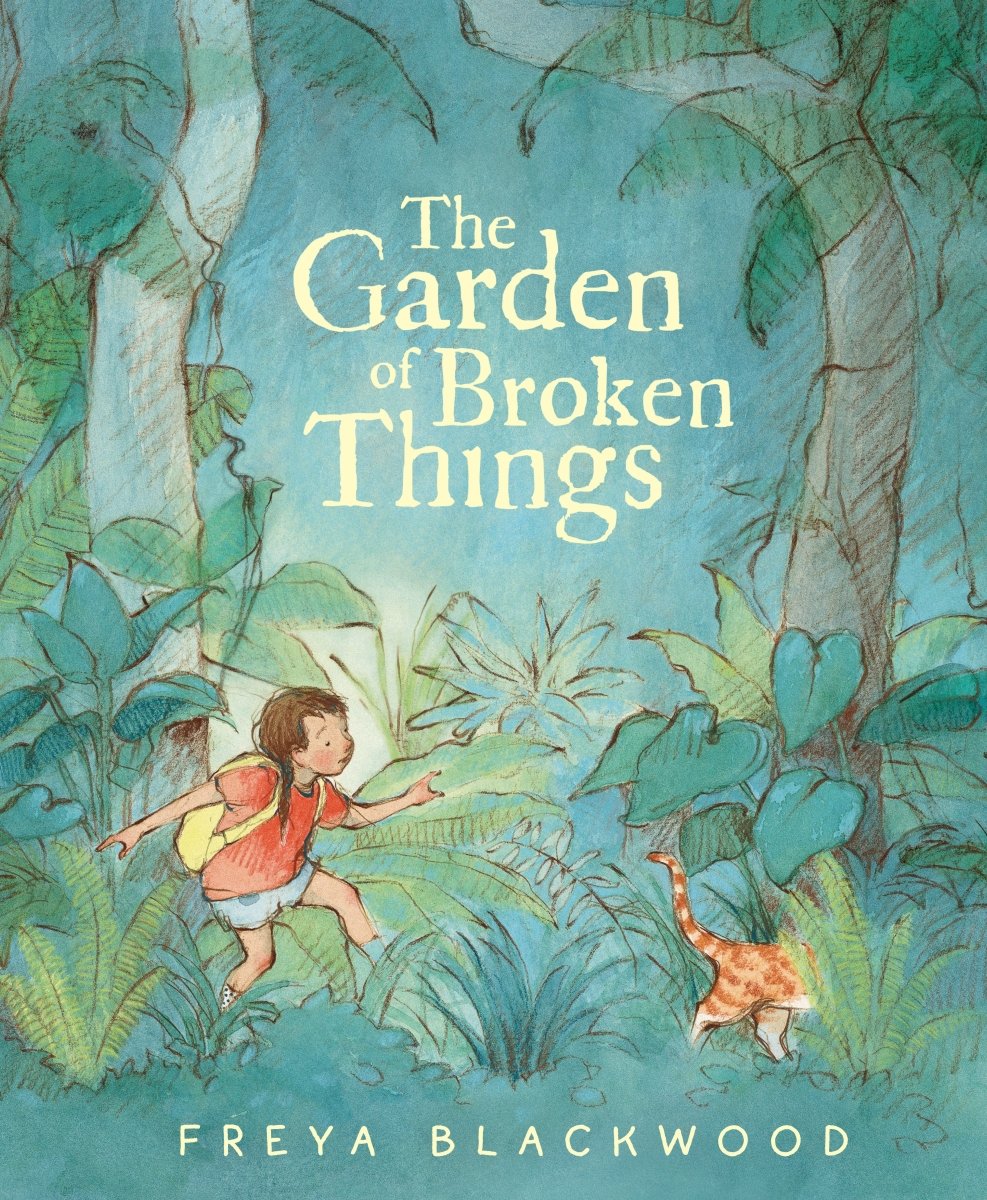Featuring Blackwood’s trademark gentle watercolour, pencil and pastel images and enchanting child characters, ‘The Garden of Broken Things’ is a gentle, moving, playful and life-affirming picture book. On their way home from school, the neighbourhood children hold their breath and run past the dilapidated old house with the overgrown garden at 9 Ardent Street. But chatty Sadie stops to talk to the cat on the fence, and then follows it into the jungle-like garden, where trees and bushes loom above her and broken household goods lie abandoned.
Led by the cat, Sadie goes deeper into the garden and finds a little old lady, still in her dressing gown, asleep on a bench. Unperturbed by her silence, Sadie chats away about her day and the things that are important to her, and then reads a book to the old lady. As darkness descends, Sadie falls asleep, and it is only then that the woman stirs. The other children have already gone home, so the old lady, her mind full of fond memories, takes Sadie home to her worried parents. Her job done; she realises that she is ready to let go. But, before she does, she leaves her fabulous garden to the children of Ardent Street.
The masterful visual storytelling in this book lends itself to close visual literacy studies. The story begins on the introductory pages with a visual ‘preface’: on the half title page, two vignettes of a young couple in their garden with its comfy bench; on the imprint page, a view of the garden with the now elderly couple sitting on the bench holding hands; and, on the title page, a small vignette showing the old lady sitting alone on the bench.
In the story proper, Blackwood combines a wide range of stylistic and compositional elements: a double-page aerial perspective of the houses on Ardent Street; the looming, overgrown garden shown from a child’s perspective; the linking image of the ginger cat, which with close-looking can be found in each of the double-page spreads; variations in the perspective as the illustrator zooms in and out on her subjects; keeping up the visual interest through variations in the number and size of the vignettes on each page; and the striking use of white space, especially in the seminal image of the old lady’s final appearance in the book. This image is open to different interpretations. Does the old lady die? Or has she, thanks to Sadie, found a new lease of life by welcoming the children into her garden? This is a moving story about childhood play, connecting with others, grief and memories, and the importance of generosity and communication.

